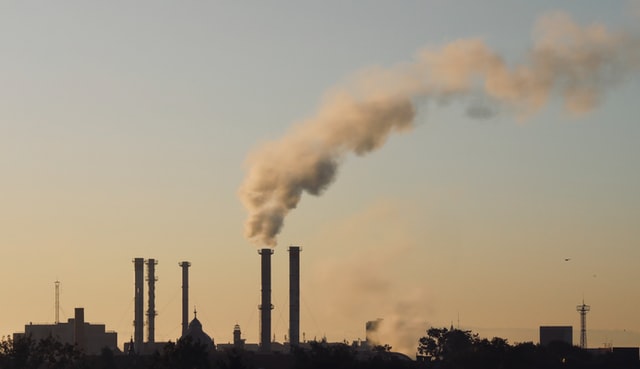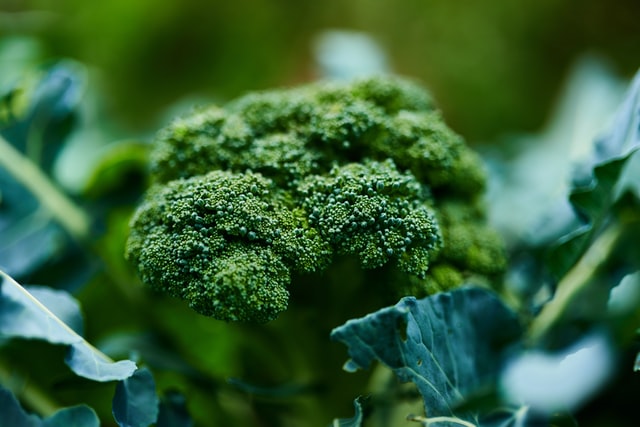The term “pollution nutrition” is a new label for a concept that many scientists have known to be true for quite some time. We all know that air around the globe is polluted every day by several industry sectors including coal, gas, factories, and more. Pollution nutrition refers to how we can fight against the harmful effects of air pollution through food, and it’s a trend gaining steam.
A 2019 study published in the Proceedings of the National Academy of Sciences concluded that more than 100,000 Americans die each year from illnesses related to air pollution, such as heart disease, stroke or cancer. Another report found air pollution to be the fifth leading risk factor for mortality.

Photo by Cristi Goia on Unsplash
Sound alarming? You betcha! But as a society, people are realizing they are not helpless in combating the negative health effects of air pollution. Two things are likely to happen in the next few years as pollution nutrition emerges to the forefront of trends:
- Consumers have the power of choice. They will start to make food choices about brands that are actively working to offset and minimize air pollution. According to Mondelez’s 2021 State of Snacking Report, 80% of consumers have already become more conscious of what they are buying and why. More than half of consumers say that they would like to buy snacks from companies working to offset the environmental impact. It’s a growing concern for consumers who will become more and more educated on the power of our food choices.
Purchasing foods that are USDA-certified organic is a starting point. Certified Organic products are prohibited from utilizing a list of synthetic fertilizers, pesticides, herbicides and other chemicals that may contribute to pollution in our air. For example, a study by the University of Virginia and The Organic Center found that organic farming helps to recycle nitrogen, reducing the amount of reactive nitrogen that is released into the air when compared to conventional farming practices. In fact, organic farming releases 64% less than conventional farming. While nitrogen itself is required for human and plant life, it’s the reactive version in excessive quantities that can lead to environmental harm and negative health effects for humans.
Some companies are taking significant steps to reduce their carbon footprint or even reach net zero emissions. SRW partner Teton Water Ranch is doing their part to help reverse the effects of climate change by establishing farming and production practices that sequester carbon emissions. Originating in New Zealand, Anchor Dairy recently launched their new Organic carbonzero™ Certified Butter in addition to several of their carbonzero™ specialty milks. Natural Prairie Dairy is making waves in the dairy industry with their Varcor™ system that transforms cow manure into clean water, dry organic fertilizer, and aqueous ammonia reducing greenhouse emissions and creating a closed-loop farm system.
- Consumers will equip their bodies to fight against the harmful health effects of air pollution by eating (and drinking) more nourishing, nutrient-dense food. And they definitely already have a jumpstart down this path. Nutrients that have been shown to help reduce the risk of negative health outcomes from air pollution are many of the same nutrients that are essential for a healthy immune system, heart, brain, bones, nervous system and well… you get the idea. These important nutrients are key for overall wellness and longevity. A growing body of evidence suggests that some key nutrients may be protective against pollution damage by reducing inflammation and oxidative stress, including:
-
-
- B vitamins
- Vitamin C
- Vitamin D
- Vitamin E
- Omega-3 fatty acids
- Carotenoids
- Choline
- Curcumin
- Sulforaphane
-
Sulforaphane, a plant compound that comes from vegetables like broccoli, cauliflower, kale, cabbage and brussels sprouts, is what we like to call an “up-and-comer” nutrient. A 2015 study found that consuming more sulforaphane from raw cruciferous vegetables, particularly broccoli sprouts, helps the body excrete more air pollutants through urine. In other words, this nutrient aids in the detoxification of these toxins. This promising research could have major implications on just how important diets are to preventing long-term health risks stemming from air pollution.

Photo by Hans Ripa on Unsplash
In the future, you can expect consumers’ purchasing powers to create a demand for more regenerative farming practices and food. We predict they will support more brands that are leading the way, such as Teton Waters Ranch and Anchor Dairy. But perhaps even more importantly, they will need to invest in themselves each and every day (and I’m not talking about a spa day). What they eat and drink might just be their best defense against the toxins in the air. In time, they can and will cultivate eating patterns that are designed to be protective and include quality foods that give their bodies the nutrients they need to be able to stand up and fight against the detrimental effects of air pollution.


